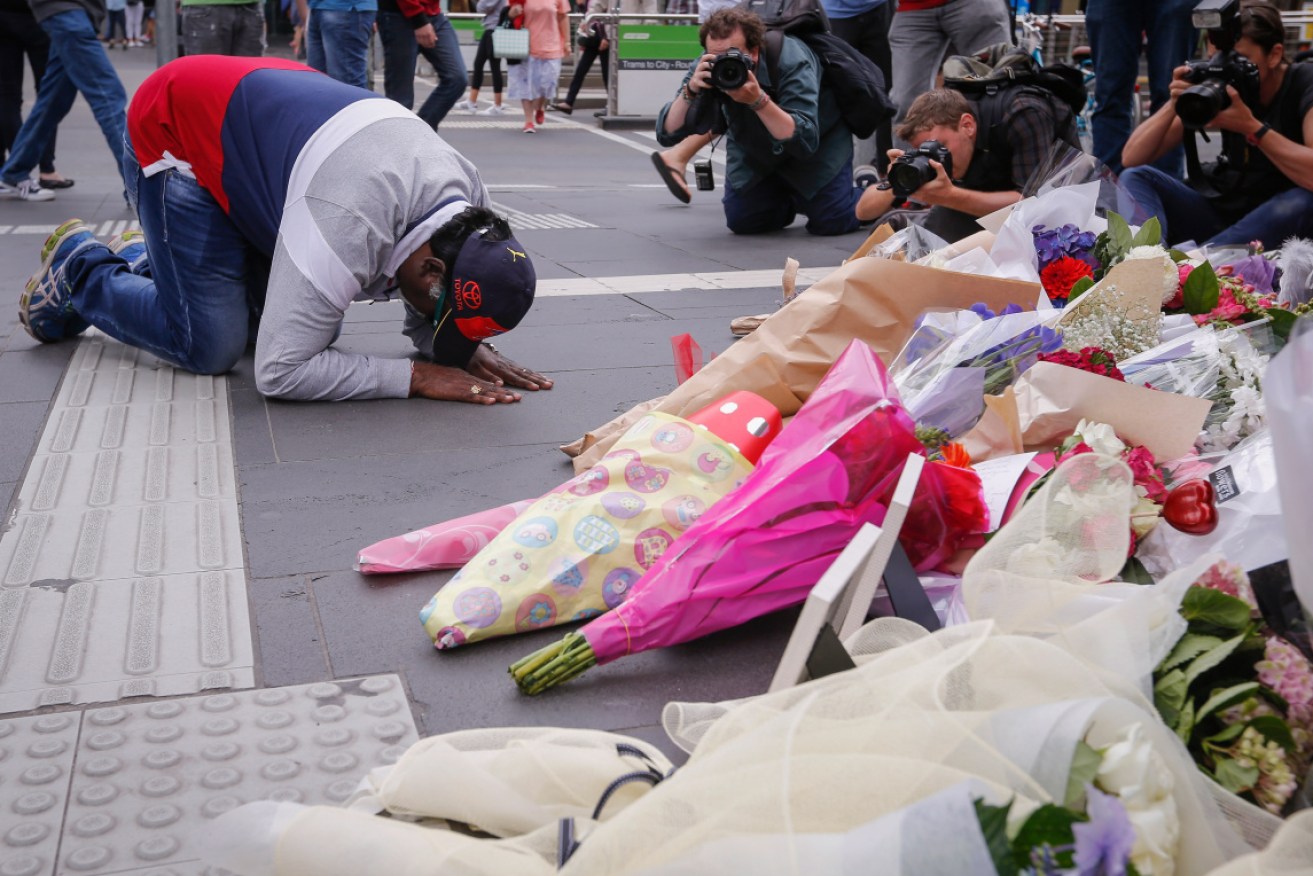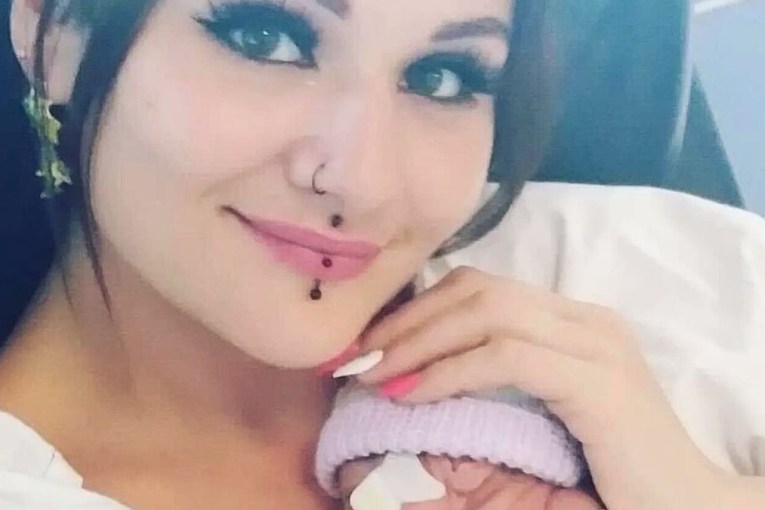Bourke Street tragedy remembered on three-year anniversary of attack


People paid their respects to the victims by laying flowers at Bourke Street Mall. Photo: Getty
On Monday at 1.30pm in Melbourne, bustling Bourke Street may give little hint it was the scene of one of the worst mass murders in Australia’s history.
But the city and its people are permanently scarred.
“It’s in your mind all the time. You can’t help it,” said 75-year-old retiree Barbara Wallis.
It has been three years since the city’s darkest day when James Gargasoulas used a stolen car to mow down pedestrians.
Three-month-old Zachary Bryant was the youngest of the six victims killed when the car turned left off Swanston Street and ploughed through the busy shopping precinct on January 20, 2017.

A smoking ceremony is held before the floral memorial on Bourke Street is removed on January 31, 2017, in Melbourne. Photo: Getty
Dozens more people were injured when Gargasoulas drove down Swanston Street into Bourke Street Mall before being shot in the arm and dragged from the car by police.
Mark Weinberg, the judge who in February sentenced Gargasoulas to life in jail with a non-parole period of 46 years, described the murderous rampage as “one of the worst examples of mass murder in Australian history”.

James Gargasoulas pictured leaving the Supreme Court of Victoria on January 31. Photo: AAP
Extra CCTV and a public alert system are now in place in the city. Bollards now line busy streets, with Princes Bridge near Federation Square one of the most recent to be protected by permanent barriers in time for summer events including the Australian Open.
In December, the state government announced that by mid-year more than 700 police will be armed with semi-automatic rifles.
But has that helped restore a feeling of safety?
Melburnians have told The New Daily how their perceptions of the city have changed since news of the massacre broke.

Barbara Wallis vividly remembers the day of the attack. Photo: Christiane Barro
Ms Wallis had been shopping in the mall less than 24 hours before the car attack. Three years on, a feeling of ‘what if’ continues to linger in her mind – so, too, the images of the victims.
“You get flashbacks of those poor people,” she said.
Sitting opposite clothing store H&M, where an outpouring of floral tributes were laid for victims, Ms Wallis was only just thinking about the potential for someone to plough through the heart of the city again.
“We wouldn’t have had a chance,” she said.

Friends comforting each other a day after the attack. Photo: AAP
Ever since that attack, Brian Brooks, 80, decided to only come to Melbourne’s CBD for hospital appointments.
“We only come in the city when we really have to. We’re here at the moment because we’re showing a couple of people from Sweden around,” Mr Brooks said.

Brian Brooks has stayed away from the city since the attack. Photo: Christiane Barro
“But we only come in here now if we’ve got to go to the hospitals, not for anything else.”
For about a month after the attack, 20-year-old university student Nicola Toomey was not allowed to go to the city on her own.
“My dad especially didn’t want me to come to the city by myself. But, I’m not too worried.”
She said she feels most safe around Flinders Street, where permanent bollards were installed to protect pedestrians from cars.
“Overall I feel safe crossing this road,” Ms Toomey said.

Nicola Toomey was at home when news of the attack popped up on her Twitter feed. Photo: Christiane Barro
Candice Longmire recalls frantically trying to reach her sister who had been working in the CBD on the day of the attack.
“All of the family were trying to call her because we didn’t know where she was,” she said.

Bourke Street Mall where concrete blocks were situated on June 26, 2017. Photo: Getty
It took an hour for her sister, who was attending a conference, to respond after receiving “70 missed calls from everybody”.
Ms Longmire’s sense of safety only wavered after the decision in December to arm more than 700 police with semi-automatic rifles in an effort to combat terrorist attacks in Victoria.

Candice Longmire feels uneasy about police being armed with rifles. Photo: Christiane Barro
“I feel fairly safe walking around the city. I don’t feel so safe with police now having assault rifles,” she said.
Even still, she recalled the “beautiful way” Melburnians rallied around each other and “those ugly bollards were painted to be gorgeous and have some love on them”.
It has been two years since Vincent Berry, 32, migrated to Australia from Scotland.
“I feel very safe. I think Melbourne is a reasonably safe environment and at no point in my time here in Australia, particularly in Melbourne, have I felt endangered,” Mr Berry said.

Police close a road to traffic after Gargasoulas deliberately drove into a crowd. Photo: Getty
“I’ve never really seen any trouble since I’ve been here, so it’s all good for me.”

After two years in Melbourne, Vincent Berry says he has no reason to feel unsafe. Photo: Christiane Barro
Bourke Street was targeted again on November 9, 2018 – this time in a stabbing attack by Hassan Khalif Shire Ali that killed beloved cafe owner Sisto Malaspina.
University student Trent Borchard, 24, slammed the CBD’s hostile architecture, saying the bollards are “disgusting” and have even been “destroying the city”.
“People cover them up to make them look pretty, make themselves feel safer in their mind … I don’t have any clue how useful they are,” Mr Borchard said.








